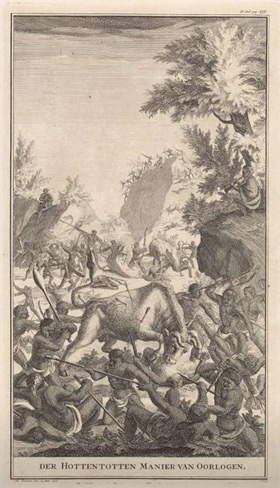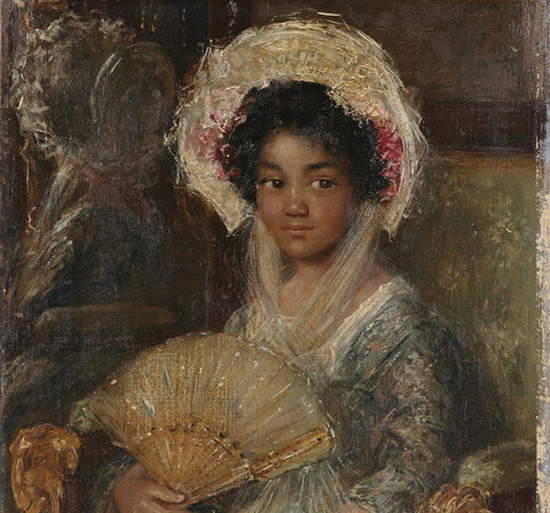Is it right to change the titles of works in the name of political correctness? The case of the Rijksmuseum
Until the 19th century, it was very rare, if not almost impossible, to find artists who chose a specific title for one of their works. As a result, the designations by which we are now familiar with a great many masterpieces, even world-famous ones, derive either from cataloguing in historical archives, or from documentation that is also historical (payment notes, letters of commission, and so on), or from descriptions drawn up by art historians (often and often contemporaries of the artist) who first dealt with the painting. Therefore, if a title was not specially chosen by an artist, we might consider it almost as a kind of conventional indication. Thus, a question arises that a conservator of a collection of old works might ask himself nowadays: does it make sense to change the names of artworks (when, of course, not chosen by the artist) in order to update them according to the way of thinking of contemporary society?
At the Rijksmuseum in Amsterdam, the staff that cares for the ancient collections has certainly asked the question, and we must assume that the answer has been affirmative, because a mammoth work is underway to update the titles of the works: the measure, announced last December 9 during a press conference, aims to remove, from the titles and descriptions of the works kept in the museum, terms that might be offensive or inappropriate according to our current sensibilities. Some of the terms? Neger (“nigger”), kaffer (like neger, used in South Africa), mongooltje (“mongoloid”), dwerg (“dwarf”), hottentot (“eighty-eight”), bosjesman (“bushman”), eskimo (“Eskimo”), indiaan (“American Indian”), and so on. All to be replaced with more respectful terms, or simply deleted. In some cases, because they are words deemed offensive: This is the case, for example, of neger, but also of eskimo (the inhabitants of Greenland and neighboring lands prefer to be called Inuit) and of hottentot, which comes from a word in Afrikaans meaning “stutterer,” and which was affixed by the settlers to the Khoi peoples because of the language they spoke (this is the same principle by which the ancient Greeks called non-Greek peoples barbarians: bárbaros in ancient Greek means precisely “stutterer”). In other cases, because they are terms that denote a distinctly Western point of view, disrespectful of the fact that different populations, such as those that make up the large group of American Indians, have different original designations.
 |
| Engraving from 1727, by Abraham Zeeman, whose title has been changed: no longer Der Hottentotten manier van oorlogen (“The way the Hottentots war”) but Khoi in oorlog (“Khoi in war”) |
The Rijksmuseum’s decision, as was widely expected, has sparked international controversy: because it is thought that other museums might imitate the Dutch institution, and if operations are conducted unwisely, there could be a risk of sacrificing centuries of history in the name of political correctness. It should be made clear that the intentions of the Rijksmuseum are more than laudable. It is right that a museum, a place where culture is experienced, should fight in the first person to promote theelimination of racial barriers: overcoming the mistakes of the past by means of abandoning terminology linked to the colonial legacy and the idea of white man’s supremacy is crucial to building a brighter future for humanity. But it is also necessary to emphasize that history cannot be erased. And art produced in a specific historical period cannot be bent to contemporary values: the risk lies in losing sight of the historical context of reference. To make it clearer, we can take an example close to our reality. If today a great photographer of international renown decided to take a photograph of a girl of Sinti ethnicity and titled his work Gypsy Girl, he would probably be looked at askance because, over the centuries, the term Gypsy has taken on a pejorative connotation. If, on the other hand, the Uffizi decided to update the names of all of Alessandro Magnasco ’s works with politically correct terms (creating references that were perhaps inconceivable by an eighteenth-century artist, such as “Refection of nomads” or “Gathering of nomads and soldiers”) we might be faced with ananti-historical operation. Perhaps it would not be the case to speak of revisionism, but certainly such an operation would emend the texts related to the works from terms appropriate to the cultural reality of the historical context within which the artists moved. It would then be interesting to know how the museum intends to approach art writings that use terms now light years removed from our sensibilities. We were talking about this just a few days ago in the article devoted to Bronzino ’s portrait of the dwarf Morgante (which, moreover, depicts a character who was given a nickname with clear disparaging intent): Giorgio Vasari appreciated the painter’s skill in portraying the protagonist’s “extravagance of monstrous limbs.” Should we therefore avoid referring to such passages when we talk about a work, because according to today’s way of seeing, completely unacceptable ways are used to refer to a person?
The Rijksmuseum’s measure could be understood precisely as a gamble. Using the term khoi instead of Hottentot for an eighteenth-century work (even where the title is clearly stated) might make the descriptions appear more respectful in the eyes of us contemporaries. And it is not necessarily wrong to do so, but alongside the correct term, the replaced term would also need to be accounted for, because if the changes are not adequately explained, the risk is that the visitor is not given important information about the history. One would, in essence, be severing a certain link to the past: in the case of the paintings depicting the Khoi peoples, Holland’s link to its colonial past. A past that was far from happy, since the Dutch also often enslaved the populations of the territories they conquered, and there was no shortage of brutal massacres either: might not glossing over the idea of superiority that led the colonists to affix names to the local populations that reflected the point of view of the invaders amount to a wrong to the peoples who had to endure atrocities and suffering? The past cannot be forgotten; on the contrary: it must be remembered so that the same mistakes are not repeated in the future.
Perhaps the most debated case is that concerning a painting made around 1900 by the Dutch artist Simon Maris and known, until before the change of title, as Negerinnetje (“Negro Girl,” the title under which it entered the collections of the Rijksmuseum in 1922): the title was changed to Jonge vrouw met waaier (“Girl with fan”). While in fact, in Italian as in Dutch, the adjective “negro” is now used only in a derogatory sense, it is also true that removing the reference to skin color from the painting could cause one to lose sight of the meaning the artist intended to give to the painting (or that which his contemporaries wanted to intuit). What the Rijksmuseum wants to pursue is, in essence, a far from simple operation. It is not necessarily that it cannot be done, nor is it necessarily that it is necessary to leave the titles unchanged over time. However, it is necessary that changes be implemented not only with respect for the subjects depicted, but also with full respect for history: art produced centuries ago cannot be indiscriminately adapted to contemporary values, because to do so would mean losing a part of history. Finally, this is an operation that should not only invest words: prejudices are not erased simply by changing a name, but they are erased by appropriate education policies, by incentives for culture, and by the elimination of inequalities. Bottom line: was the Rijksmuseum right to initiate this revisiting of the titles of the works? Perhaps they are not wrong: but they will certainly have to take a great deal of caution not to fall into excesses that would risk causing far more damage than they would like to remedy.
 |
| Detail of a painting by Simon Maris, made around 1900, with the title changed (“Girl with Fan,” formerly “Negro Girl”) |
Warning: the translation into English of the original Italian article was created using automatic tools. We undertake to review all articles, but we do not guarantee the total absence of inaccuracies in the translation due to the program. You can find the original by clicking on the ITA button. If you find any mistake,please contact us.




























